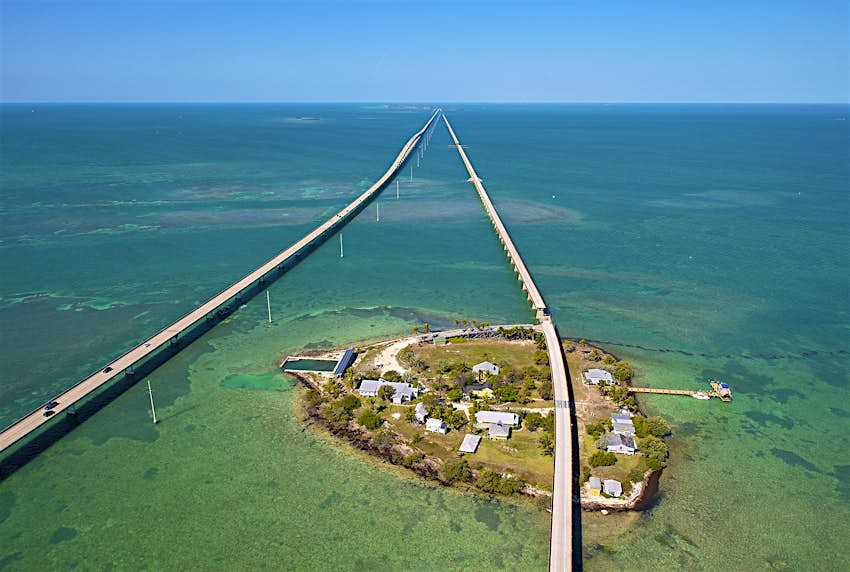The Old Seven Mile Bridge is one of the best photo ops in the state after a years-long $44 million restoration. Old Seven is a tiny island below the bridge in the Middle Keys and was originally built in the early 1900s. The bridge became a hub for outdoor activities in the 1980s after being converted for automobile use in 1938. The Miami Herald reports that by 2016 there were reports of crumbled deck and broken railings on the century-old 2.2 mile span. The first phase of a 30-year, $77 million plan to restore and maintain the structure began the following year. Old Seven has been made safer for recreational use with improvements including structural steel and bridge joint system repairs, as well as new deck and handrails for pedestrians and cyclists. The project was challenging because it was a historic bridge and we had to restore it to its original appearance. The crowds are returning after the bridge reopened several months ahead of schedule. Pigeon Key is an attraction in its own right, and it is also a recreational opportunity. It used to be home to 400 workers on the railroad and now offers a variety of activities, including snorkeling, bird-watching, fishing, and a small museum with artifacts detailing the island's history. You can step back in time when you visit Pigeon Key. Thanks to the involvement of Henry Flagler, Pigeon Key and the bridge are on the National Register of Historic Places. One of the main architects of modern Florida, Flagler recognized the state's potential as a tourism destination early on, and he was responsible for some of its trailblazing accommodations, including the Hotel Ponce de Len in St Augustine. When the US announced plans for the Panama Canal in 1905, the Standard Oil tycoon immediately thought of extending his Florida East Coast Railway from Miami to Key West. The engineering challenges involved in that extension were not insignificant, steel and concrete bridges were required to lift almost half of the 156 miles of track over water and marshland.
But seven years, five hurricanes and a reported $50 million later, the first train on the Over-Sea Railroad rolled into the depot at Key West. The line would operate from January 22, 1912, until Labor Day 1935, when a massive category 5 hurricane demolished the Keys, killing more than 400 people and the railway along with it. Wilhelmina Harvey, a Keys native and then Monroe County Commissioner, reminisces about when she was a school teacher. Haven't you heard that there's been a storm? Harvey said that he would always remember being a passenger on that train. It is still beautiful.

Make the most of your time in the USA with Lonely Planet's range of travel guides. You can discover the best things to do in the USA through insider tips, suggested itineraries and handy maps.
Buy USA travel guides8 min read • Published about 8 hours ago 8 min read • Published about 9 hours ago
8 min read • Published about 9 hours ago 5 min read • Published about 9 hours ago
5 min read • Published about 9 hours ago 9 min read • Published about 9 hours ago
9 min read • Published about 9 hours ago